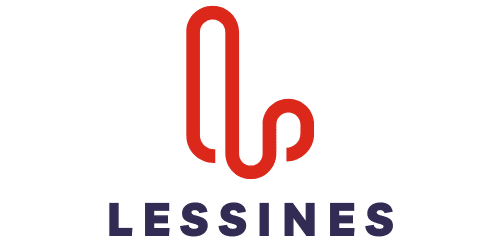How to Develop a Digital Literacy Curriculum for UK’s Senior Citizens?

The continuous advances in technology and digital media have drastically changed the way we communicate, work, and even spend our leisure time. Being digitally literate has become an essential skill in the 21st century, not just for the young generation but also for the senior citizens of the UK. The older population can benefit significantly from digital literacy as it can help them connect with the outside world, access services, and enhance their quality of life. However, the challenge lies in designing and implementing a digital literacy curriculum that is accessible, fun, and easy to understand for this particular age group. This article delves into how one can develop an effective digital literacy curriculum for the UK’s senior citizens.
Understanding the Needs of Senior Citizens
The first step in developing a suitable curriculum is understanding the needs and capabilities of senior citizens. The digital landscape can be intimidating for older adults, especially those with limited or no prior exposure to digital tools and platforms. It’s crucial to conduct comprehensive research and surveys to understand their learning needs, physical abilities, and potential barriers to embrace digital literacy.
Avez-vous vu cela : How Is Telepsychiatry Being Integrated into UK’s Mental Health Services?
A well-designed digital literacy curriculum should address the unique challenges faced by seniors. For instance, it should take into account the slower pace of learning, difficulty in retaining new information, physical issues such as poor eyesight or hearing, and fear or anxiety towards technology.
Also, the curriculum should be based on real-life needs like online banking, communication with loved ones, accessing health and government services, and consuming news and entertainment content. By understanding these needs, the curriculum could make digital literacy relevant and beneficial to the life of senior citizens.
Dans le meme genre : What’s the Latest in Anti-Pollution Skincare Innovations?
Designing an Accessible and User-friendly Curriculum
The second step is designing an accessible and user-friendly curriculum. The course content should be simple, concise, and jargon-free. Avoid using technical terms or complex language that could potentially confuse or discourage the learners.
To make the lessons more engaging, use plenty of visual aids such as images, videos, and infographics. Also, consider incorporating ample practice exercises to reinforce learning. The curriculum should progress gradually, starting from the basics of using a computer or a smartphone, to browsing the internet, sending emails, using social media and apps, and ensuring online safety.
Furthermore, emphasize the use of large fonts, high contrast colour schemes, and audio descriptions to cater to seniors with visual or hearing impairments. Also, ensure that the learning materials are available in various formats, such as print, digital, and audio, to accommodate different learning preferences and abilities.
Training the Trainers
Having competent and patient trainers is key to the success of any digital literacy program. The trainers should possess not only technical skills but also the ability to effectively communicate with and understand the needs of senior citizens.
The trainers should undergo a comprehensive training program that equips them with the skills to handle the specific challenges that may arise when teaching older adults. For example, they should be trained on how to simplify complex digital concepts, how to provide emotional support and encouragement, and how to adapt the teaching pace and style according to the learner’s needs.
Moreover, the trainers should have a deep understanding of the curriculum and the digital tools and platforms that will be taught. They should be prepared to answer any questions, troubleshoot issues, and provide additional resources for self-learning.
Implementing the Curriculum
After the curriculum is designed and the trainers are ready, the next step is implementing the curriculum. It’s essential to choose a conducive learning environment that is comfortable, accessible, and equipped with the necessary training tools and resources.
The learning sessions should be organized at a pace that is comfortable for the seniors. Avoid rushing through the topics and provide ample time for discussion, practice, and revision. Regularly collect feedback from the learners and trainers to identify areas of improvement and adjust the curriculum accordingly.
Another crucial aspect of implementation is promoting the program to attract more learners. This could be done through various channels such as community centres, seniors clubs, local newspapers, and social media platforms.
Evaluating the Success of the Curriculum
Evaluating the success of the curriculum is as important as its design and implementation. It provides valuable feedback that can help improve future iterations of the program.
For evaluation, consider using both quantitative and qualitative methods. Surveys, tests, and observations can be used to measure the learners’ progress and the effectiveness of the teaching methods. Meanwhile, interviews, focus groups, and feedback forms can provide insights into the learners’ experiences, challenges faced, and suggestions for improvement.
Remember, the ultimate goal of this digital literacy curriculum is to empower senior citizens to confidently and safely navigate the digital world. Therefore, the success of the curriculum should be judged not only by the seniors’ ability to use digital tools and platforms but also by their increased confidence, independence, and satisfaction in their daily lives.
Continual Support and Upgrading the Curriculum
Continual support and upgrading the curriculum are critical aspects of the digital literacy program. The digital world is dynamic and continuously evolving. As such, the curriculum has to be adaptable and flexible to keep up with these changes.
To ensure the curriculum remains relevant, it should be regularly updated to include new developments in digital technology. For instance, the introduction of new social media platforms or changes in online safety protocols should be incorporated into the curriculum promptly.
Moreover, the support for learners should not end when the course ends. Seniors should have access to ongoing technical support to help them navigate challenges that may arise as they continue to use digital tools in their daily lives. This could be in the form of a help hotline, online forums, or regular follow-up sessions.
In addition, refresher courses should be offered regularly to help seniors revise and consolidate their digital skills. This will not only enhance their digital competency but also boost their confidence in using digital tools. Including a mix of theory and practical hands-on sessions in these refresher courses would further enhance their digital skills.
Conclusion
Designing and implementing a digital literacy curriculum for the UK’s senior citizens can be a challenging task but with proper planning, understanding of the learners’ needs, and providing continual support, it can be an achievable mission. A well-structured curriculum will help seniors navigate the digital world with more confidence and independence, thereby enhancing their quality of life.
The key is to create a curriculum that is accessible, enjoyable, and relatable for seniors, with ample support along the way. Trainers play a crucial role in this endeavour, hence equipping them with the necessary skills and empathy is paramount. Regular evaluation and timely updates to the curriculum are also essential to ensure it stays relevant in this fast-paced digital world.
On the whole, the goal of implementing a digital literacy curriculum for senior citizens is not just about teaching them how to use digital tools. It goes beyond that. It’s about empowering them to embrace the digital age, stay connected with their loved ones and the world, and access services and information with ease and confidence. At the end of the day, digital literacy is a tool for senior citizens to enhance their life, and not a challenge to overcome. Through these efforts, we can make sure no one is left behind in the digital revolution.
